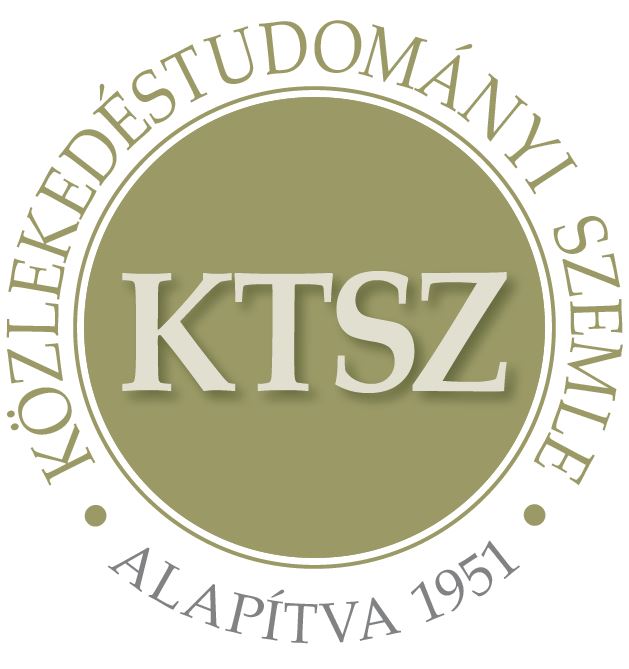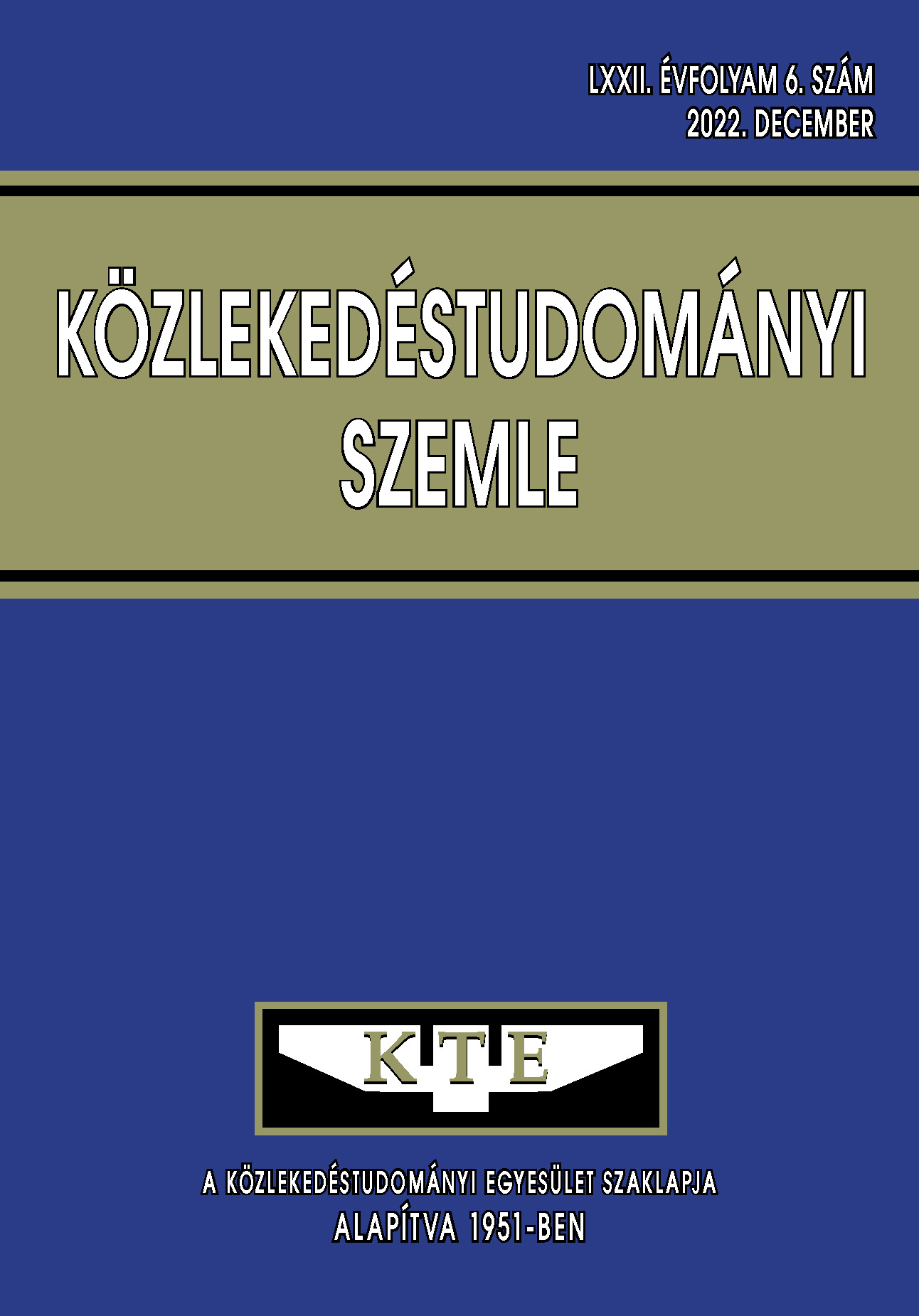The potential of and need for autonomous shipping in Hungary
Abstract
The development of autonomous vehicles in transport is a leading research area. This is no different in the field of shipping. In maritime navigation, dynamic positioning systems are now commonplace, and several prototype robotic vessels are already in test operation. Inland water navigation is still largely at the theoretical and experimental modelling stage, using
these results and investigating specificities. This paper gives a brief overview of the current state of the artin autonomous navigation at sea and inland waterways and analyses the opportunities in Hungary. It can be said that there is currently a demand for the development and operation of fully autonomous vessels in Hungary and worldwide. The main reasons for this are crew shortage and crew-related costs, as well as the desire to increase safety and environmental protection. In order to achieve safe and sustainable fully autonomous shipping, research is still
needed in a number of areas.
References
https://op.europa.eu/webpub/eca/landscape-review-transport/hu/#chapter5, ISBN 978-92-847-1384-4
Nyert a járványon a vasúti és vízi fuvarozás. Sz.n. In.: Mozdonyvezetők lapja, 2021. április 9. https://mosz.co.hu/3409-nyert-ajarvanyon-a-vasuti-es-vizi-fuvarozas.html
www.inland-navigation-market.org; ISSN 2070-6715
Dr. Balogh Tamás et al.: Zászlóshajó sodrásban – a hajós turizmus helyzete és kilátásai Magyarországon, in.: Vállalkozói Értesítő 2022/3., Menedzser Praxis Szakkiadó és Gazdasági Tanácsadó Kft.
Rødseth, Ø. J.: Assessing Business Cases for Autonomous and, Unmanned Ships, Technology and Science for the Ships of the Future, Proceedings of NAV 2018, 19th International Conference on Ship & Maritime Research, IOS Press 2018, ISBN 978-1-61499-870-9
Jankovics, I. and Kale, U. : Developing the pilots’ load measuring system, Aircraft Engineering and Aerospace Technology, 2018, Vol. 91 No. 2, pp. 281-288, DOI: https://doi.org/gqv77t
DNV: Class Guideline for Autonomous and Remotely operated ships, DNV GL Guidelines, 2018
ABS: Guide for Autonomous and Remote Control Functions, ABS Guidelines, 2021
CCNR: Herbstsitzung 2018 Angenommene Beschlüsse CC/R (18) 2, CCNR Resolutions CC/R 2018 II, 2018
Verberght, E., van Hassel, E. : The automated and unmanned inland vessel. Journal of Physics, Conference Series, 2019, DOI: https://doi.org/jj2z
Rødseth, Ø. J. : From concept to reality: Unmanned merchant ship research in Norway, 2017 IEEE Underwater Technology (UT), 2017, pp. 1-10, DOI: https://doi.org/jj22
Ziaul Haque Munim: Autonomous ships: a review, innovative applications and future maritime business models, Supply Chain Forum: An International Journal, 2019, Vol. 20 No. 4, pp. 266-279, doi: 10.1080/16258312.2019.1631714, DOI: https://doi.org/ggbhcx
Engelhardtsen, Ø.: Revolt og klassegodkjenning av autonome skip, Norsk Forum for Autonome Skip, Oslo, 2016 (https://nfas.autonomous-ship.org/wp-ontent/uploads/2020/09/09_dnv_pres.
pdf) (2022.04.14)
https://www.marinelink.com/news/yara-birkeland-project-paused-duecovid-478386 (2022.04.14)
Gerben P., Marcus K., Muhammad R. A.: An unmanned inland cargo vessel: Design, build, and experiments, Ocean Engineering, 2020, Vol. 201, ISSN 0029-8018,
https://watertruckplus.eu/ (2022.04.14)
https://northsearegion.eu/media/18331/opmaak-nieuwsbrief6_versie-b.pdf (2022.04.14)
https://smartmaritimenetwork.com/tag/seafar/ (2022.04.14)
Meersman, H., Moschouli, E., NanwayBoukani, L.: Evaluating the performance of the vessel train concept. Eur. Transp. Res. Rev. 12, 23, 2020, DOI: https://doi.org/jj23
Simongáti, Gy.: A balatoni közforgalmú hajóközlekedés stratégiai koncepciója, Helyzetelemzés és javaslat, 2018
Közlekedés Fővárosi Tervező Iroda Kft.: A városi és elővárosi személyszállító hajók és kiszolgáló létesítmények fejlesztésére Megvalósíthatósági Tanulmány II. kötet, 2014.
Articles published electronically are open access (OJS), freely available online and can be downloaded. Authors of articles are not charged any publication or publishing costs (APC). Users have the right to read, download, copy, print, and search the articles, or share the full text with a link.
Authors must declare that their submission has not been previously published in another journal, that financial support has been acknowledged, and that the list of references is complete and accurate, including specification of URLs and DOIs (if available). When submitting a draft article, each author approves the submitted version. Authors guarantee that the article is their original work. Authors are required to participate in the peer review process, follow the advice of reviewers, meet the prescribed deadlines, and, if any, withdraw the submission or correct errors.
All submitted articles are subject to peer review, where the editors request an independent evaluation from at least one expert, ensuring that the reviewer(s) have no conflicts of interest with the authors. The final decision is made by the Editor-in-Chief, who takes into account the evaluations and the suggestions of the editors. The editors and reviewers treat the submission confidentially.
The publisher and editors are committed to maintaining high ethical standards and to preventing publications that involve research misconduct. They follow the COPE guidelines on such ethical issues.
The authors retain copyright and grant the journal the right of first publication under the Creative Commons License (https://creativecommons.org/licenses/by-nc-nd/4.0), which allows others to share the work, while acknowledging the authorship of the work and the first publication in the journal.
The journal archives all published articles, and the journal's owner, the Hungarian Society of Transportation Sciences, will continue to operate the database even if the journal ceases to be published.















